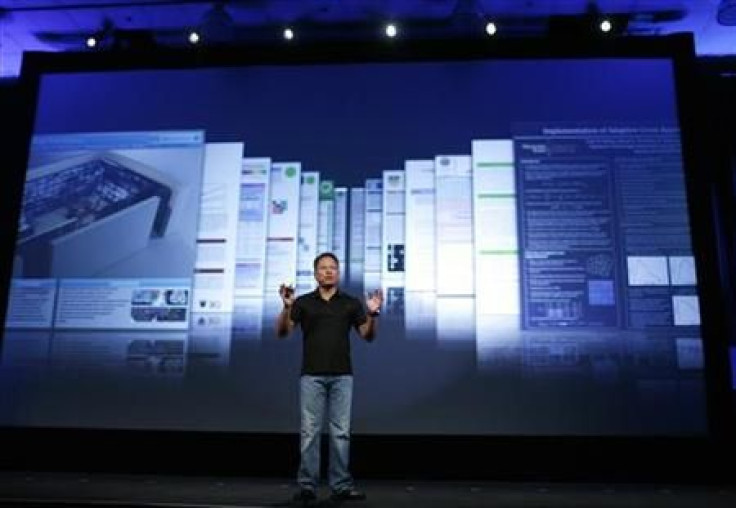Nvidia Earnings Cheer Investors; CEO Sees More Tablet Wins

Shares of Nvidia, the PC chip graphics pioneer, jumped nearly four percentFriday after third-quarter earnings blew past Wall Street estimates.
They opened up two percent at $14.74, fell back and then rose again into midafternoon, when they hit $15.10, up four percent.
The company reported third-quarter net income more than doubled to $178.3 million, or 29 cents a share as revenue rose five percent to $1.06 billion.
Analysts expected NvIdia to report third quarter net around 26 cents a share on revenue around $1.06 billion, A year ago, Nvidia reported net income of $84.9 million, or 15 cents, on revenue of $843.9 million.
Nvidia CEO Jen-Hsun Huang said the Santa Clara, Calif.-based semiconductor designer expects fourth-quarter revenue to be relatively flat, although it could rise as much as two percent. In the year-ago quarter, revenue was $884.6 million.
On the other hand, Huang said Nvidia is confident its new Tegra 3 chips will be designed into more smartphones and tablets in development now. He also said Nvidia is benefiting from new games from Electronic Arts and others that demand blazing graphics.
Tegra 3 is going to revolutionize the smartphone market again, he told investors after the release because it consumes less power and provide better multimedia. Nvidia is gunning for share in the market competing with Apple's iPhone family.
Nvidia shares have gained nearly 18 percent since August, although they are off 6 percent this year.
Founded in 1993 by alumni of semiconductor powerhouses Advanced Micro Devices and LSI, Nvidia engineers designed the graphics processing unit (GPU) now the keystone of computer graphics, and got them designed into most desktops and laptops.
While 60 percent of revenue still comes from the PC market, where growth is easing, Nvidia is going upstream, with its new chips designed into smartphones, workstations and supercomputers.
Huang provided more details on the impact of the European financial crisis on sales, the impact of Thailand's floods, which have devastated many parts of the electronics sector and prospects for new, higher-end products. He said the Thai floods may damage demand for cards upgraded with Nvidia chipsets.
We continue to believe Nvidia is the best positioned semiconductor company to benefit from Windows on ARM deployments, Jefferies analyst Mark Lipacis told investors.
Under Huang, 48, Nvidia has moved up the technology chain both with new designs as well as acquisitions. To better compete against Texas Instruments and Qualcomm, the company acquired Britain's Icera for $367 million this year to position itself for the burgeoning smartphone sector.
The purchase provided Nvidia with baseband support needed to run graphics on smartphones. Its Tegra 2 family already is designed into tablets like Motorola Mobility's Xoom and Samsung Electronics's Galaxy Tab.
Last month, Nvidia said it would ship 18,000 Tesla GPUs to the U.S. government's Oak Ridge National Laboratories to enable its Titan supercomputer to perform faster graphics modeling. Because the GPUs handle many applications in parallel, they speed up servers based on older forms of central processing units.
Nvidia chips are now being designed into three of the top five of the top supercomputer platforms, said Steve Scott, chief technology officer. The executive formerly worked for Cray, one of the pioneers in the sector.
CEO Huang had previously estimated Nvidia's third-quarter revenue would range between $ 1.06 and $1.07 billion.
Meanwhile, Nvidia reported its cash pile had increased to $2.7 billion. The money can be used for acquisitions, new products as well as reserving space on the chip foundry lines that assemble all of its products.
The company's market capitalization is $8.68 billion; enterprise value is $6.2 billion.
© Copyright IBTimes 2024. All rights reserved.












